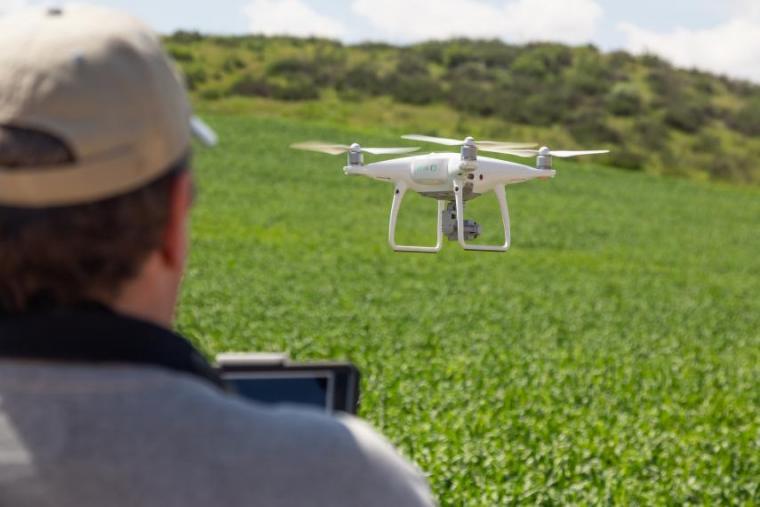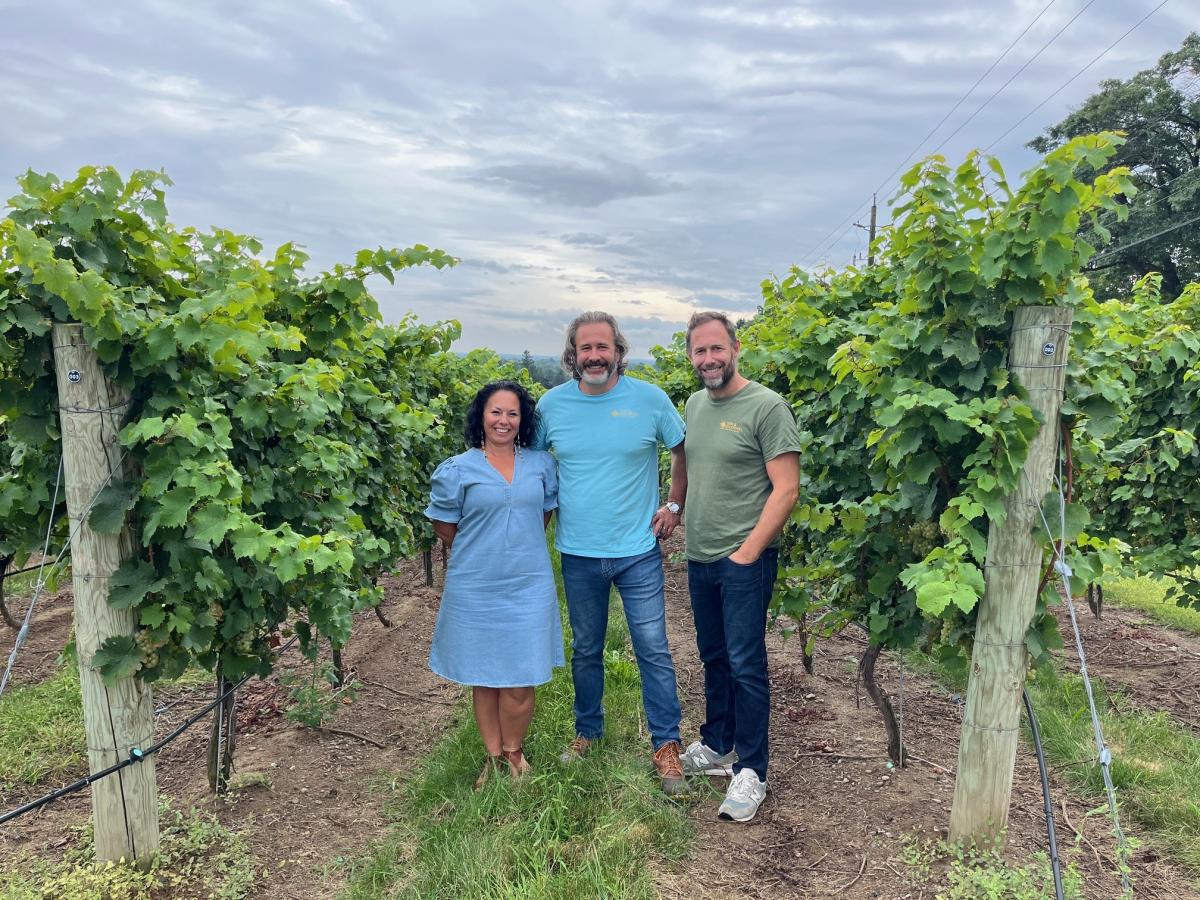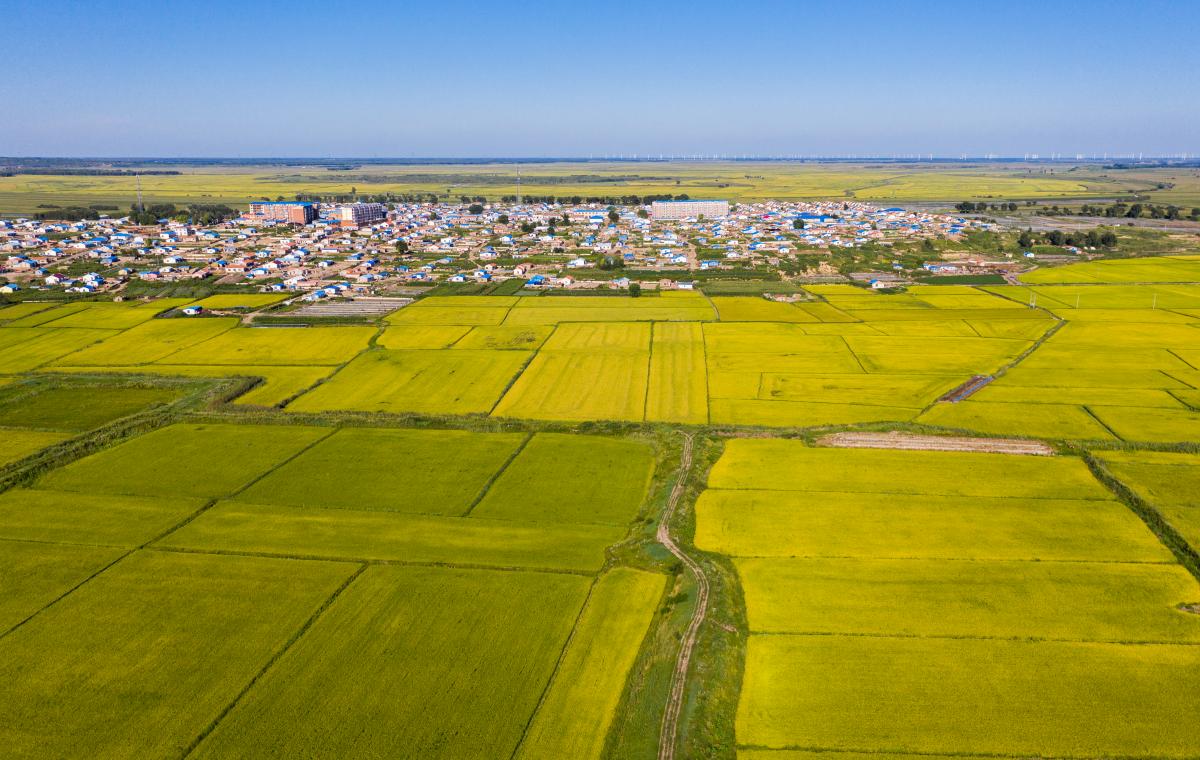
How can we preserve farmland while accommodating housing, industry, and other needs for Canada's growing population? And how can producers meet rising food demands while also protecting the environment?
Helping to balance often-competing priorities in Canada’s rural communities is the goal for experts connected with the University of Guelph’s Ontario Agricultural College (OAC), including many researchers and graduates whose work reflects literal field experience.
A sixth-generation cash crop farmer in Norfolk County and a mature PhD grad of OAC’s School of Environmental Design and Rural Development (SEDRD) [1], Dr. Pam Duesling recently became Director of Community Planning and Development with the Town of Pelham in Ontario’s Niagara Peninsula.
Her new job lands her in an 18,000-strong community that is currently updating its Official Plan to address anticipated population growth and urban boundary changes alongside on-farm diversification opportunities.
Duesling brings 25 years’ worth of work experience in municipal development, policy and land use planning in Haldimand, Norfolk and Brant Counties.
While Pelham is smaller than its surrounding towns, Duesling says similar kinds of conflicts and opportunities play out in rural communities across the province.
“Every year there seem to be more sophisticated developers in rural communities,” said Duesling. The challenge, she said, lies in “trying to find a balance between the small town feel and rapid growth opportunities which create a strong tax base.” In Brant County, commercial and industrial development brought new jobs and facilities for residents. At the same time, industry posed environmental challenges for town residents and neighboring First Nations near the Grand River.

“We had to work at finding the balance between new growth needed in industry and preserving the natural lands.”
To resolve rural-urban issues, she said, “the key is in having a really strong policy framework. With great policy comes good development.”
Duesling said growing up on the 170-acre family farm planted her passion for community growth and development. At U of G, she studied how farmers can balance traditional production with new on-farm diversified revenue opportunities from wineries to event barns.
Resolving land use conflicts
Sharing research results on land use planning with practitioners is partly the focus for Dr. Sara Epp [2], a 2019 PhD grad from OAC who now studies land use conflicts as a SEDRD professor.
By looking province-wide at impacts of policy and planning decisions – including decisions that take farmland out of production – Epp aims to provide data that helps rural municipalities make better choices to balance agriculture and development.
One example involves cannabis producers in the Town of Pelham. Having studied aspects of that industry including zoning bylaws, dark sky policies and odour control, Epp has shared policy ideas and approaches with planners and town councillors in other municipalities with agricultural and greenhouse operations.
Elsewhere, she has shared data with planners in Grey-Bruce County through meetings run by the Ontario Federation of Agriculture. Underlining the expertise and resources in her school, Epp said, “Small municipalities lack tracking capacity, but we can do it.”
She has also studied impacts of recent northward migration of Old Order Mennonite farmers from southern Ontario.
Epp is interested in the impact of moves on the rural infrastructure and communities left behind in the south. “There’s a huge erosion of social cohesiveness of a rural community when we see loss of farmland.”
Amid concerns about the future viability of agricultural land, Epp also recognizes the need to accommodate urban growth and development.
“We need both farming and housing,” said Epp, who grew up on a family farm in the Niagara Peninsula.

“We are valuing farms for land value but not for farming; it’s more valuable as a subdivision. We have to look for the middle ground and clarify the narrative.”
Epp is also studying needs and barriers for veterinarians practicing in northern Ontario.
Her research takes her northward routinely. “I’m always interested to see impacts on the ground,” said Epp, referring to OAC’s support of community-engaged scholarship. “I want to be immersed in a real community. “We are improving life with this research.”
How farmers balance costs and green benefits
Exploring how information provided to farmers affects their decisions about farm practices and technologies is the focus of Dr. Tongzhe Li [3], a professor in OAC’s Department of Food, Agricultural and Resource Economics and holder of the Arrell Chair in Behavioural and Experimental Economics.
Specifically, her research explores how food producers balance their ongoing costs with their environmental impacts.
In 2022, Li conducted an experimental auction at the Outdoor Farm Show looking at which farmer outreach methods encourage use of cover crops. In 2023, she followed up with a look at incentives and messaging from entities like public agencies and policy makers that encourage farmers to adopt technology and practices for sustainable farming.
For the latter study, about 1,000 farmers were invited to bid on things such as the price of nitrogen stabilizer in fertilizer. Li aimed to learn whether farmers were motivated more by private benefits like improved soil health or whether they were driven by more public benefits such as reduced nutrient runoff to streams or lower nitrous oxide emissions from soil.
She found that farmers were more likely to bid higher when informed of private benefits alone. When information highlighted local or global public benefits, auction bid prices decreased.
“Farmers are responding to private benefits.” said Li, adding that governments often stress public issues such as climate change in communications to the agricultural industry.
Even combined public and private benefits failed to sway farmers much during the auction.
“The agricultural industry is competitive, there’s not a lot of margin to play with,” said Li. “It’s human nature. When it comes to business, the profit drive matters.”
Three years ago, Li bought a 50-acre hobby farm near London, where she grows corn and soybeans in rotation. She views her plot as a homegrown study field to help her learn more about the business.
“I’m trying to understand the farming context and how farmers make decisions."
Epp and Li received funding for their research from the Ontario Agri-Food Innovation Alliance [4], a collaboration between the Government of Ontario and the University of Guelph.